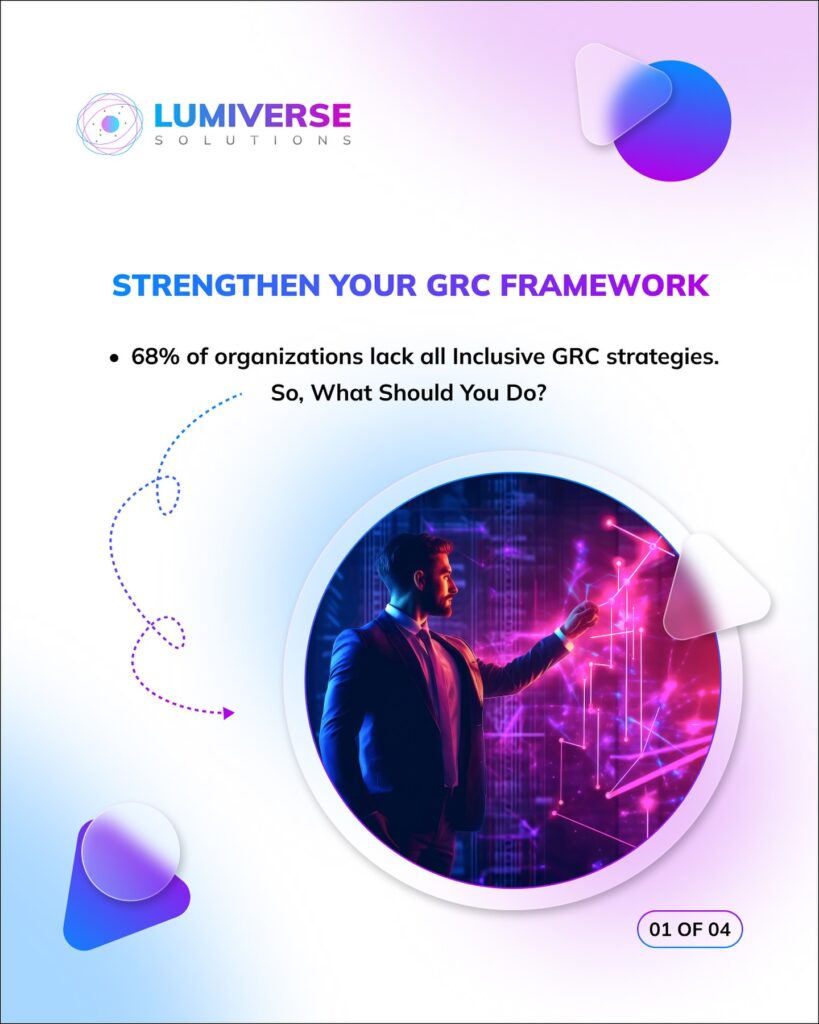Why a Strong GRC Framework is Essential for Risk Management
GRC framework provides a structured approach to managing an organization's governance, risk, and compliance functions. By establishing clear policies and processes, the GRC framework fosters a culture of accountability and transparency across all levels of the organization. This holistic view enables organizations to identify potential risks and compliance obligations early, ensuring that they can take proactive measures to mitigate these threats before they escalate.
Additionally, the GRC framework aligns the organization’s strategic objectives with its risk management strategies, facilitating informed decision-making at all levels. With an integrated approach, businesses can effectively communicate risk-related information to stakeholders, which enhances collaboration and accountability. By adopting a robust GRC framework, organizations can not only protect their assets but also create a resilient environment that adapts to changing regulations and market conditions. This article will further explore the specific benefits of implementing a strong GRC framework, as well as the key components and steps necessary for successful implementation.
Understanding the GRC Framework
A GRC framework is an integrated approach that aligns governance, risk management, and compliance activities to enhance an organization’s overall effectiveness. This holistic structure is essential for organizations striving to adapt to an increasingly complex regulatory landscape and a dynamic business environment. By establishing clear processes and responsibilities, the GRC framework helps organizations manage risks more effectively by creating a structured environment where decision-making aligns with corporate objectives.

Moreover, this alignment ensures that all levels of the organization are aware of and committed to the overarching goals, promoting a unified direction toward achieving strategic initiatives. By fostering a culture of accountability and transparency, the GRC framework not only empowers employees to recognize their roles in risk management but also supports organizations in achieving their strategic goals while safeguarding against potential risks.
The Importance of a Strong GRC Framework
Enhanced Risk Awareness
A strong GRC framework cultivates a heightened awareness of risks within the organization. It enables businesses to identify potential threats early on and assess their potential impact on operations. This proactive approach allows organizations to mitigate risks before they escalate into significant issues.
Key benefits include:
- Risk Identification: By implementing a structured framework, organizations can systematically identify risks across all departments.
- Informed Culture: A robust GRC framework fosters a culture of risk awareness, encouraging employees at all levels to recognize and report potential threats.
Improved Decision-Making
An effective GRC framework provides decision-makers with timely, relevant information regarding risks and compliance obligations. This enhanced visibility allows leaders to make informed choices that align with the organization’s risk appetite and strategic objectives.
Benefits include:
- Data-Driven Insights: Access to real-time data enables leaders to analyze risks more accurately and consider their potential impacts before making decisions.
- Strategic Alignment: The GRC framework aligns risk management strategies with business goals, ensuring that all decisions are consistent with the organization’s mission.
Regulatory Compliance
Regulatory compliance is a significant concern for businesses in today’s complex legal landscape. A strong GRC framework ensures that organizations adhere to applicable laws, regulations, and industry standards.
Benefits include:
- Reduced Risk of Penalties: By proactively managing compliance obligations, organizations minimize the risk of facing legal penalties and fines.
- Enhanced Reputation: Demonstrating compliance builds trust with customers, partners, and regulators, enhancing the organization’s reputation in the market.
Streamlined Operations
A robust GRC framework streamlines operations by integrating governance, risk, and compliance activities into a unified process. This integration helps eliminate silos and promotes collaboration across departments.
Benefits include:
- Efficiency Gains: Streamlined processes reduce redundancies and improve operational efficiency, allowing teams to focus on value-added activities.
- Resource Optimization: By aligning resources with risk management priorities, organizations can allocate their budgets and personnel more effectively.
Key Components of an Effective GRC Framework
To build a strong GRC framework, organizations must focus on its key components: governance, risk management, and compliance. Each component plays a vital role in creating a cohesive approach to managing risks.
Governance
Governance involves establishing clear policies, procedures, and accountability structures that guide decision-making within the organization. It defines roles and responsibilities and ensures that leaders uphold ethical standards and corporate governance principles.
Risk Management
Risk management encompasses the processes and practices used to identify, assess, and mitigate risks. This component includes risk assessments, risk treatment plans, and ongoing monitoring of risk exposure.
Compliance
Compliance ensures that organizations adhere to relevant laws, regulations, and industry standards. This component involves monitoring regulatory changes, conducting audits, and maintaining documentation to demonstrate compliance efforts.
Steps to Implement a Strong GRC Framework
Implementing a strong GRC framework involves several key steps. Organizations must approach this process strategically to ensure success.
Assess Current Processes
Begin by assessing existing governance, risk management, and compliance processes. Identify gaps and areas for improvement to lay the groundwork for a more robust framework.
Define Roles and Responsibilities
Clearly define roles and responsibilities for governance, risk management, and compliance activities. Ensure that all employees understand their roles and are equipped to fulfill them effectively.
Develop Policies and Procedures
Create comprehensive policies and procedures that guide the organization’s governance, risk management, and compliance efforts. Ensure these documents are easily accessible and communicated to all employees.
Invest in Technology
Utilize technology solutions to support your GRC framework. Many organizations benefit from GRC software that automates processes, centralizes data, and facilitates collaboration among teams.
Monitor and Review
Regularly monitor and review the effectiveness of your GRC framework. Conduct audits and assessments to identify areas for improvement and make necessary adjustments to ensure ongoing effectiveness.
Conclusion
A strong GRC framework is essential for effective risk management in today’s complex business landscape. By integrating governance, risk management, and compliance activities, organizations can enhance risk awareness, improve decision-making, and ensure regulatory compliance.
As the business environment continues to evolve, investing in a robust GRC framework will empower organizations to navigate challenges, protect their assets, and achieve their strategic objectives with confidence.
This blog post outlines the importance of a strong GRC



Comments
Post a Comment